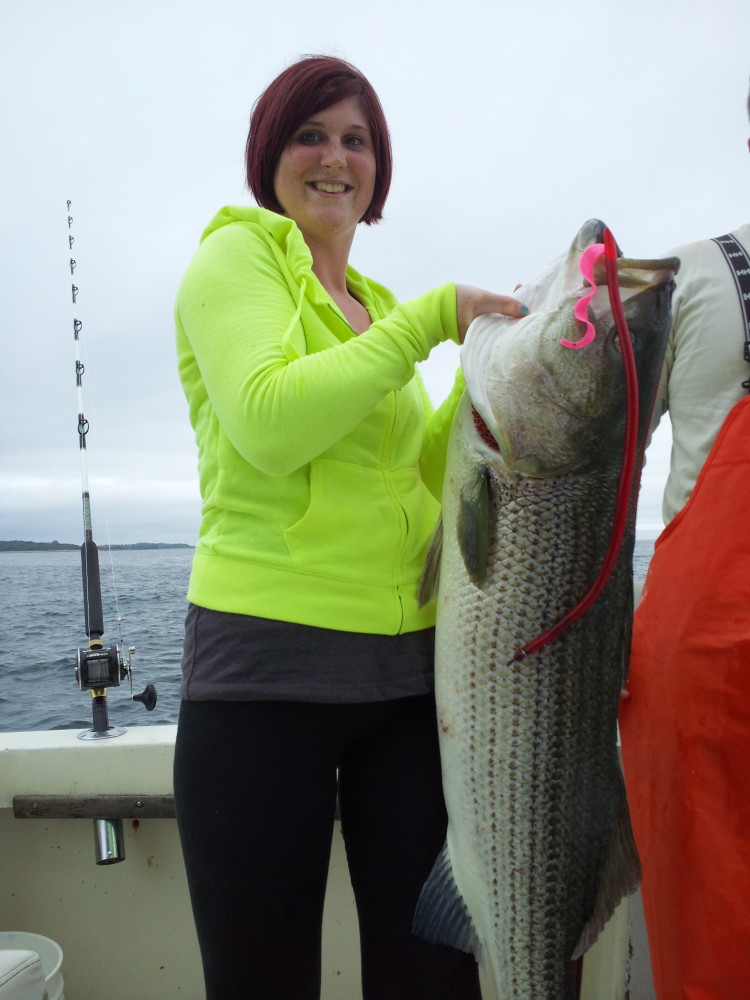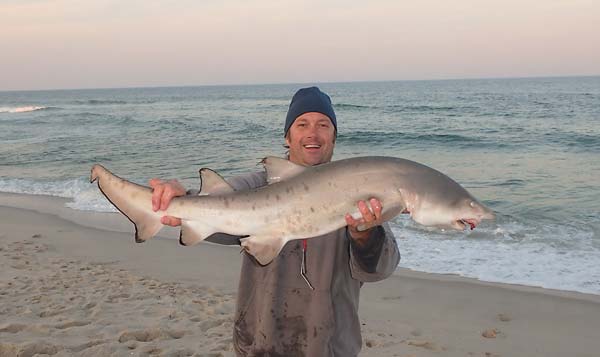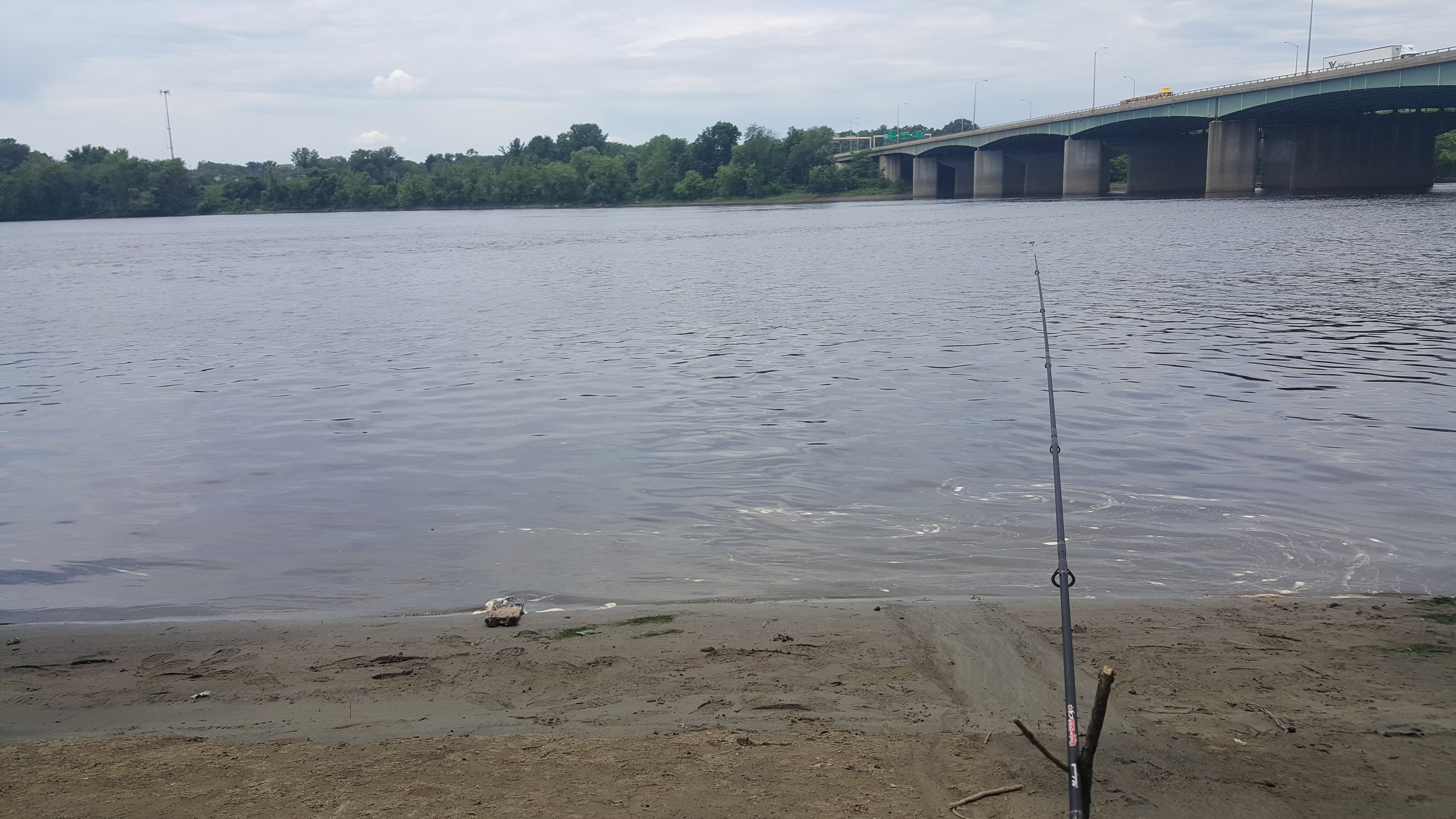It was late in the tuna season when Jason Ward took his first shot at bluefin on spinning gear. He hadn’t been living in Boston for long, and when he heard of fishermen taking 80- to 100-pound bluefin on spinning gear, he had to get out and try it.
Ward grew up big-game fishing with his father in New Zealand, taking advantage of its world-class striped marlin fishery. After college, he moved to the Cayman Islands for a bit, where he fished for yellowfin tuna and small blue marlin. Ward describes his move from the Cayman Islands like this, “I met a beautiful blonde who was on vacation, and next thing I knew, I was living in Boston.”

Sorry Charlie 170
On his first trip using spinning gear for tuna, Ward said of himself and the crew, “We got our asses kicked.” At the time, many of the fishermen targeting tuna on spinning gear were fly- and light-tackle guides using trial and error to find the gear that would stand up to tuna that had been returning a little larger each season and were by then pushing the limits of what was possible on the available gear. Ward spent the winter applying some of his big-game experience to the tuna fishery, looking for suitable rods, reels and lures. The rods and reels were easy enough to get, Ward said, with help from the crew at Saltywater Tackle—a New Jersey Tackle Shop that specializes in jigging and popping for big-game species around the world. The lures, however, were another matter.
“I couldn’t get them,” Ward said. Fishermen were showing up with $200 stickbaits from Japan and catching tuna on them, but those lures, in addition to being expensive, were highly in demand and nearly impossible to get. So, Ward decided to make his own.
Ward had started making lures at a young age in New Zealand—shortening his mother’s broomsticks to make poppers, and twisting teaspoons into metal lures—so getting into lure-making wasn’t a huge leap. The challenge in making stickbaits for big-game fish, however, is creating something that casts well on heavy tackle, moves in an enticing way, has an attractive finish for keen-eyed pelagics, and is still tough enough to hold together when a 100-plus-pound fish swims away with it at 40 miles per hour.

Siren Lures’ slow, sweeping retrieve combined with the realistic profile and reflective finish make it a highly sought-after lure.
His first models were made of wood, but Ward soon switched to resin for its consistency. The lures worked extremely well, both in drawing strikes and holding up to monster bluefin in the Northeast. They were also successful on some of the hardest-fighting fish from all around the world, including the notoriously tough giant trevally. Six years ago, Ward made the leap from building lures for himself to building lures as a business. Since then, Siren Lures has developed a global reputation as big-fish catchers, but Ward’s testing grounds remain the tuna waters in the Northeast and around Cape Cod.
The Siren Lures family consists of the slow-sinking Sorry Charlie, the single-hook Bolt, the fast-sinking Deep Seductress, and the tail-weighted Bad Mon. The first three are the most popular among Northeast tuna fishermen. The Sorry Charlie 170 is designed to be fished slowly to present an easy target to a feeding tuna. Its slow, sweeping retrieve combined with the realistic profile and reflective finish make it a highly sought-after lure.
The single hook design of the Bolt 160 is meant to inflict minimal damage to fish that are going to be released. Ward switches to this lure after he has a tuna already in the box. The single hook and extra weight allow it to cast like a bullet, and the streamlined design has fantastic action underwater, both on a straight retrieve and when sweeping or pumping the rod. The Bolt stays level when it sinks and quivers as it falls, so fishermen must be ready for tuna to eat it on the initial drop.
Ward initially designed the Deep Seductress for giant trevally and dogtooth tuna, but with new sizes in the offing, it’s quickly becoming a favorite among tuna fishermen. It’s designed to sink very quickly to fish feeding over deep sea mounts. It allows fishermen to get down to the fish, while covering more water than with a jig. The Deep Seductress 225 is a big lure—your “elephant gun,” as Ward put it. There’s also the Deep Seductress 225 MXP—for “mid-water explorer”—that is a little lighter and a Deep Seductress 185. Ward also says that smaller 155 and 125 models are coming soon. Each design is made with a metal plate harness inside, and are “super dense and super strong.” Ward likens the Deep Seductress to a larger version of the Bolt, but with a more angular design. This gives it a great swimming action on a straight retrieve, and he mentioned that it has even been used to troll for wahoo.
Ward is excited about the smaller Deep Seductress models for bluefin. The Deep Seductress 125, measuring a bit over 4 inches, was born out of the frustration fishermen were experiencing late in the fall of 2016 when surface-slashing bluefin were so focused on small butterfish that getting a bite was next to impossible. He called it “Project Antidote” as he went to work on a small lure that could get bites from lock-jawed tuna and still survive the battle.

Bolt 160 in “Shattered Sprat” & “Broken Dawn” finishes
Ward’s color profiles are more impressionistic than realistic, and tuna have no problem attacking them. When casting a small lure in big, open water, it must be seen, which is the reasoning behind the standout colors of Siren Lures. One of his most popular patterns is the black-and-silver “Black Tie Affair,” which is a color you’d expect to see being thrown for stripers at night rather than bluefin by day. This color creates a sharp silhouette against the sky, and has proven effective at getting bites from bluefin on both cloudy and sunny days.
Siren Lures are available at Saltywater Tackle, but they sell out quickly. Ward says he wants to ramp up production, but with the work and attention to detail required to produce each lure, it’s a tall order. Still, he’s working in his Massachusetts lab to figure that out … when he’s not out casting to breaking bluefin.
The post Featured Lure: Siren Lures appeared first on On The Water.
Powered by WPeMatico





You must be logged in to post a comment.